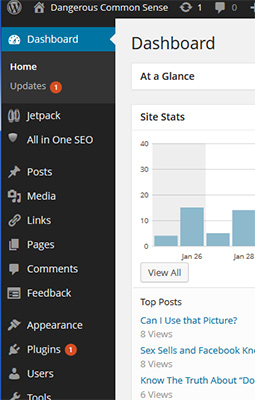Embracing The “M” Word
Yes, I maintain websites after I’ve designed them. Yes, I maintain websites designed by other people.
Apparently a lot web designers want to just that: design websites. They don’t want to do minor changes or, God forbid, touch a site someone else originally created.
Many of the calls I get are from tired business owners who want to change some things in their site, but they don’t need — or want to pay for — a complete overhaul. They report problems finding someone who can help them.
Sometimes their original web designer has found a full-time graphics design job (a lot of web designers seem to be frustrated or underemployed graphic designers). Other times the business owners report that their original designer doesn’t do maintenance.
I think we web designers have to be available to make changes and tweaks to our customers’ pages. Phone numbers change, photos get outdated, new products come out, business hours expand! All of these updates belong on your website.
Sometimes the business owner needs more substantial changes. They want to add a video or a series of pages about new things they’re doing. The owner wants to update their site, but they aren’t up for a total re-do!
I get asked to help with all sorts of websites, even sites created on WordPress or other platforms that supposedly allow non-technical users to update content. WordPress, Joomla, and proprietary systems by Wix, GoDaddy, and others all require some computer skills. Although they do not require special software on your computer, these tools take time to learn and tame. Many owners are too busy running their business to spend hours coming up to speed and implementing changes. I am happy that they call me!
Doing maintenance may not be as fun as creating an eye-catching design from scratch. And, when I work on a site that someone else created, I have to adjust to whatever style that person had. I also have to find out where they have put the images, layouts, and styles I’m being asked to use and modify. And, of course, the original designer is never as organized and clear as I am!
Still, I am happy to do maintenance. I have done one-time updates, and I have some clients whose sites I change several times a month like Theatre Rhinoceros, a San Francisco theater company. I like making all of them reflect the owner’s current activities.


